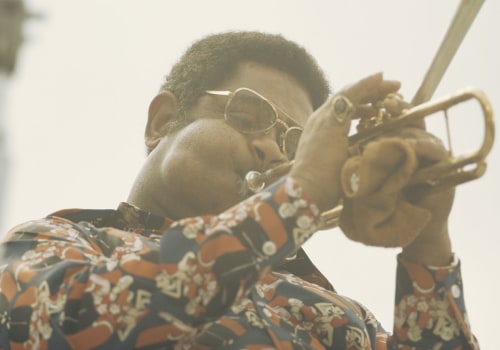Jazz has been an integral part of American culture since its emergence in the early 20th century. Not only did it bring greater recognition of the multicultural elements of the United States, but it also allowed women an outlet to express themselves. The song, dance, and fashion media that came with jazz changed the lives of Americans across the country, and its influence continues to exist even today. Throughout the 1920s, jazz crept into almost every aspect of American culture.
Everything from fashion and poetry to the civil rights movement was affected by its influence. The style of the clothes changed to make it easier to dance to the rhythm of jazz melodies. Even poetry evolved as a result of jazz, and jazz poetry became an emerging genre at the time. These poems presented the same depth of emotion and sense of improvisation as jazz music.
Jazz-influenced fashion was embraced by Flappers as a means of rebelling against society. Since jazz is such danceable music, the clothes needed to match. Pre-war Victorian styles were not conducive to dance, so the rise of jazz also led to a change in the fashion industry. First, the dropped waist was introduced, and later, waistless dresses were all in fashion.
Not only clothes, but also hairstyles were affected; the bob style became increasingly popular than long hair because dancing was easier with shorter hair. One of the greatest contributions of American culture to the world is jazz music. It captures a variety of emotions and embraces diverse European and African influences to create a form of music that is both an art form and an expression of the soul. There is a rich history of jazz that has had a ripple effect on almost every aspect of American life, from style and social movements to the music that followed. Jazz has also gained a lot of recognition in the United States and around the world through jazz festivals. The Great Depression lasted ten years, but the jazz music of that time is mostly optimistic, pointing to the feet rather than the head.
Through all these changes, jazz techniques and vocabulary have continued to influence other forms of popular and “serious” music. With the growth of radio, the appearance of jazz stars like Armstrong in movies, and the temporary expatriation in the late 1930s of American stars such as Hawkins and composer and multi-instrumentalist Benny Carter, the feeling that jazz was becoming only the musical Esperanto of the time intensified. However, most white jazz musicians lacked the improvisational skills and originality that black musicians showed in their music. Nicknamed Free Jazz or The New Thing, its main architects were Ornette Coleman, Cecil Taylor, John Coltrane and Albert Ayler, whose music brought division and controversy to the jazz community. At the beginning of the 20th century, jazz was regionally based, racially defined dance music that featured solo and collective improvisation. Just as Africans could spontaneously invent a piece of music or rhythm without any instrument, black jazz musicians are able to incorporate some of these characteristics into their music. This was the beginning of the perception of jazz as intellectual art music, as opposed to its previous role as functional dance music.
Alto saxophonist Ornette Coleman completely eliminated harmonic progression in his quartet's music, generating the notion of “free jazz”.The Kennedy Center for the Performing Arts, Lincoln Center for the Performing Arts and other major cultural institutions have established important and influential jazz programs. The National Endowment for the Arts has honored more than one hundred musicians with its coveted title NEA Jazz Master and a monetary award. The lively rhythm of Swing music emerged during The Great Depression while gypsy jazz, Kansas City jazz and bebop emerged in 1940s. The imposition of ban in 1920s turned jazz into a musical and cultural phenomenon. Author F Gerard (199) adds that black musicians and black middle class stopped being ashamed of their culture with civil rights movement and were proud of their jazz music. We looked back at a time when jazz was dominant form of popular music heard emanating from radio stations and concert halls around world. Jazz has had an immense impact on American culture over its century-long history.
From influencing fashion trends to inspiring social movements, it has left an indelible mark on our society that continues to this day.



